FIVE FOR THE HALL OF FAME
Five for the Hall of Fame
The new inductees to the North Carolina Literary Hall of Fame include two bestselling novelists, a famed author-educator, a world-renowned master of haiku and a former North Carolina poet laureate. Ron Rash, Kaye Gibbons, Anna Julia Cooper, Lenard Moore and Joseph Bathanti will join the pantheon of North Carolina’s most celebrated literary voices in the biannual induction on Sunday, Oct. 6, at 2 p.m., at the Weymouth Center for the Arts & Humanities. The festivities are free of charge and open to the public.
Anna Julia Cooper
It has been 60 years since Anna Julia Cooper departed the world at the age of 105.
Consider for a moment the breadth of her life: Born into slavery in Raleigh in 1858, three years before Fort Sumter was fired upon, Cooper was the youngest child of Hannah Stanley, a woman enslaved by the man who was presumably Anna’s father. On Feb. 27, 1964, Cooper died in her sleep in her Washington, D.C., home, just 17 days after the Civil Rights Act passed in the United States House of Representatives, and a few months before Lyndon B. Johnson would sign it into law.
“It isn’t what we say about ourselves,” she told an interviewer on her 100th birthday, “it’s what our lives stand for.”
The life of Anna Julia Cooper — educator, essayist, poet, scholar, cultural critic and theorist — was the subject of a recent play, Tempestuous Elements, written by Kia Corthron and performed at the Arena Stage in D.C. “Yet for all her accomplishments,” said a review in the Washington Post, “Anna Julia Cooper remains a relatively obscure figure. Kia Corthron’s Tempestuous Elements . . . gives Cooper the Mount Rushmore treatment she so richly deserves.”
As another reviewer remarked, “My main question is, why didn’t I know about her until this play?”
In 1867 Cooper was among the first students admitted to St. Augustine’s Normal School and Collegiate Institute, an Episcopal school founded in Raleigh to educate those freed from slavery. Even there she bristled at excluding women from courses in theology and the classics. In 1877 she married George A.G. Cooper, a teacher at St. Augustine’s who was 14 years her senior. He would die two years later.
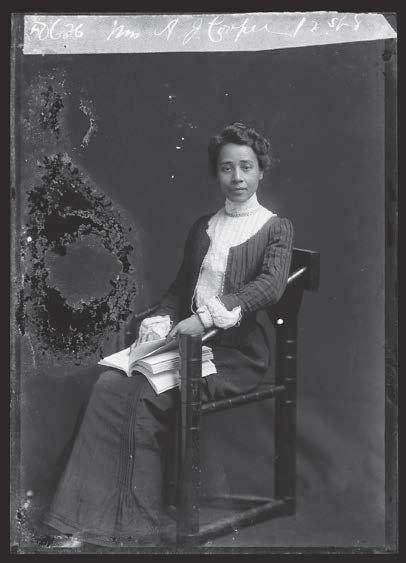
In 1881 Cooper enrolled at Oberlin College in Ohio, the first college in the U.S. to admit both Blacks and women. Even there Cooper had to fight, successfully, to gain admittance to the “gentlemen’s course” of study. She graduated with a Bachelor of Arts degree in 1884 and followed that with a Master of Science degree in mathematics in 1887. Shortly thereafter she was invited to join the faculty of what would become known as M Street High School, later Dunbar High School, in Washington, D.C. In 1892, Cooper authored A Voice from the South by a Black Woman of the South, a collection of essays credited as the first discourse on Black feminism.
At the beginning of one chapter, Cooper mentions a book titled Shall Women Learn the Alphabet, which proposes that such a thing should be prohibited by law. “Please remember this book was published at the beginning of the Nineteenth Century,” Cooper continued. “At the end of its first third, (in the year 1833) one solitary college in America decided to admit women within its sacred precincts, and organized what was called a ‘Ladies’ Course’ as well as the regular B.A. or Gentlemen’s course.
“It was felt to be an experiment — a rather dangerous experiment — and was adopted with fear and trembling by the good fathers, who looked as if they had been caught secretly mixing explosive compounds and were guiltily expecting every moment to see the foundations under them shaken and rent and their fair superstructure shattered into fragments.”
So, yes, this was a woman who could write.
In the wake of the international success of A Voice from the South, Cooper addressed the World’s Congress of Representative Women held in conjunction with the World’s Fair in Chicago in 1893. In 1900 she was on the executive committee of the first Pan-African Conference in London and was the only woman ever included in the American Negro Academy.
In 1902, Cooper became the principal of the M Street High School, and it is her five-year stint there, confronting the racial and gender inequities of the Jim Crow era, that serves as the basis for Tempestuous Elements.
Cooper insisted on a college prep, classical liberal arts curriculum. M Street sent graduates to Harvard, Yale, Brown and Oberlin. She invited W.E.B. Du Bois to address her students. It was her bristling refusal to dumb down the curriculum that led to her confrontation with a white-dominated board of education that was insisting on a “colored curriculum.”
According to Shirley Moody-Turner, the editor of The Portable Anna Julia Cooper, “The tactics used to discredit Cooper followed a recognizable pattern: public shaming, presumed incompetence, questioning her professional judgment and other innuendoes used to cast doubt on her fitness to lead.” This included rumors of a liaison with John Love who, along with his sister, was taken in by Cooper after they were orphaned and continued living with her into adulthood.
Lastly, Cooper was accused of insubordination, of which she was profoundly guilty. She was dismissed from her position in 1906. “When Cooper arrived for the first day of school, the janitor barred her from entering the building,” writes Moody-Turner. “Police officers observed from across the street. They were ordered to arrest Cooper if they deemed she was creating a disturbance. With her students watching from the windows, Cooper — always a model of dignity and decorum — exited the school grounds.” Her curriculum, however, survived her.
After the M Street debacle, Cooper taught for four years in Missouri before returning to M Street to teach Latin. Following the death of the wife of a nephew (according to the Oberlin College alumni records), in 1915 Cooper adopted their five children: Anna, Regia, John, Marion and Andrew.
When the children were old enough to be enrolled in boarding schools, Cooper continued her academic pursuits, obtaining a degree from the Sorbonne in Paris at the age of 67, the fourth African American woman to receive a Ph.D. there. Following her retirement from teaching, she became the second president of Frelinghuysen University, an institution that educated Black adults while they continued to work.
Appropriately, Cooper may have written her own epitaph in that long-ago interview on the day she turned 100: “I don’t remember ever having taken anything just for myself.”
Joseph Bathanti
Believing that the study in his home was in such a state of cyclonic disarray that meeting there would be an impossibility, or at least an embarrassment, Joseph Bathanti and I sat together in the humble space — roughly the size of a mini-storage shed — reserved for a professor of English at Appalachian State University.
He was on crutches, though this sounds worse than it was. His tendons, ligaments and joints were taking a breather from long-distance running. On the desk near his phone is an autographed copy of the album The Freewheelin’ Bob Dylan. It’s separated by a pile of books, a pair of scissors and whatnot from a copy of Howl. On the wall is a photograph of Roberto Clemente, a hero, beside a flier cordially inviting the public to follow the crowd to see and hear Sen. John F. Kennedy in October 1960.
The bookcases — there are exactly as many as the space will accommodate — are filled with volumes standing up, lying down, stacked and tilted, the top shelf crowned with baseballs, bobbleheads, photos of kids and more books. Joan Didion is near Gay Talese, who’s not far from Existentialism from Dostoevsky to Sartre, which is right above Becoming a Writer. The chair I occupy beside his desk is covered in garish Picasso-chic fabric. Against the wall behind it is an enormous playing card, the jack of hearts, which served as the cover of his book The High Heart.
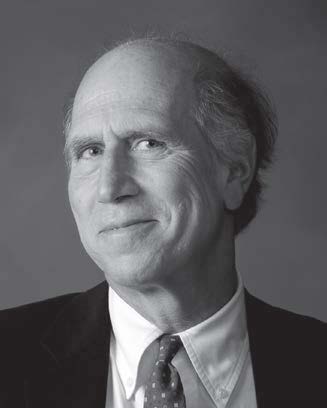
Named North Carolina’s poet laureate in 2012, one of Bathanti’s go-to lines is, “Pittsburgh is my beloved hometown, but North Carolina is my beloved home state.” He has taught in our prisons and colleges, been to our hospitals, our shelters, our daycare centers and our soup kitchens. In actual fact, he is Pennsylvania’s gift to us.
Bathanti grew up in East Liberty, an Italian working-class neighborhood in Pittsburgh. “My dad was a steelworker, my mother a seamstress. They’re union people. They just work and work and work and work, so my sister and I can have this kind of life,” he says. He came to North Carolina as a VISTA volunteer, fresh out of grad school. “I didn’t know what I wanted to do but I had a ponderously long list of things I couldn’t stomach the thought of doing,” he says. The first thing he did was meet the love of his life, Joan Carey, also a VISTA volunteer, in the same ballroom that was a set piece in Gone with the Wind.
“Jean Paul Sartre said somewhere that he pretended to be a writer until he became a writer,” says Bathanti. “I think that’s how we go about our lives. We pretend to be a father until we become a father. So, I just stayed with it. I continued to write badly, but I wrote less and less badly.”
He became a teacher at Central Piedmont Community College. “I made a living teaching,” he says. “I haven’t made a living on my writing at all, which most writers don’t. They have a straight job, as I like to say, so they can pay the rent, the gas.”
He fell into North Carolina’s community of writers. Kay Byer. Tony Abbott. Sam Ragan. Ron Bayes. Fred Chappell. Lee Smith. Too many to mention them all. “They invited me to their tables. They talked to me. They read my stuff. Initially you think everything you write is incredibly brilliant like, wow, I just reinvented the wheel. I got more objective about my work, kind of blue collar, shoulder to the wheel, pigheaded, hang in there with it, which is sort of my method. There aren’t a lot of long runs, let’s put it that way. Three or four yards at a crack. But that’s OK,” says the former four-sport athlete at Pittsburgh Central Catholic High.
Having authored over 20 books across various genres, Bathanti has accumulated virtually every plaudit his adopted state has to offer — poet laureate, the North Carolina Award in Literature, the Order of the Long Leaf Pine and on and on. But the Literary Hall of Fame is on another level.
“It means everything,” he says. “I’m terribly grateful that a Yankee interloper, a son of Italian immigrants, has entered the pantheon. To me, it’s about my mom and dad. I’m taking Joe and Rose into the Hall of Fame with me, in a lot of ways. My whole family of immigrants, my cousins, my aunts, my uncles, all those people who work so hard, so selflessly. I show up here at age 23, a volunteer to work in the prison system who wants to be a writer but has never written a bloody thing except English papers. I would have never thought that something like that was possible. It was the very beginning of everything happening. It was kind of a magic portal I feel like I stepped through.”
Into our land. Into our literature.
Lenard Moore
It would be ironic if it weren’t so profoundly true that Lenard Moore has used the smallest of nets to capture, in stark and stunning detail, the chaos of our lives and his. A master of haiku and its many associated forms — tanka, senryu, renku and on and on — Moore was the first Southerner and first Black president of the Haiku Society of America, and the author of too many poems to count. He has been published in over 30 genres and translated into more than 20 languages.
With the pockets of his dapper sport coats stuffed with tiny notebooks, Moore doesn’t just write every day; he writes everywhere.
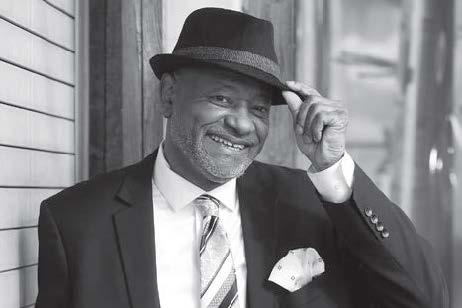
“I write all times of the day,” he says. “I write in the morning. I write at night. Walk through the woods, I write. Go to the beach, I write. In the mountains. It doesn’t matter. I go to basketball games, I always have a journal on me. I might have three.” In 1982, sitting in a Western Sizzlin’ all day, drinking a pitcher of sweet tea, he wrote 1,447 poems, and has stopped counting ever since.
Twenty years ago Moore lost his only child, his daughter Maiisha, a student at East Carolina University, in a car accident two weeks after her 22nd birthday. Her self-portrait is on the wall of his bedroom. There are Chinese fortune cookies wrapped in cellophane on the coffee table in his living room next to his daughter’s dictionary, its well-worn pages marked with as many yellow sticky notes as there are bees in a hive. On the shelf of an end table nearby is Maiisha’s Bible.
“That’s the worst thing that can happen to you. It’s kind of devastating. I went to the library about every evening for a year,” he says. “I wrote about her. I challenged myself. Writing is healing. If you go through tragedy, trauma or whatever, writing is there to help you.”
hot afternoon
the squeak of my hands
on my daughter’s coffin
It became one of Moore’s best-known haiku. “That poem kind of haunted me. At the burial I was the first one they called up to put a rose on the casket,” he says. “I put my hand on the coffin, maybe my hands were sweaty, I don’t know. I remember my hands slipped down the side and there was a loud squeak. It probably was about three days before I wrote it down. The poem just haunted me so I had to write it.”
Born in Jacksonville, North Carolina, in 1958, Moore grew up in rural Onslow County, the eldest child in a large family. He was priming tobacco by age 13, “climbing the tier poles; hanging the tobacco; in the field, on your feet; walking those long, long rows; sunup to past sundown.” He and his brothers chopped wood for his grandfather after school. “I think I got a knack for writing from listening to my grandfather tell stories. I’m sure that had something to do with it. I think if you write your truth and you document it and you try to have structure to it, you will be able to get an audience — if you tell the truth in that work. Emily Dickinson said, ‘Tell the truth but tell it slant.’”
In athletics he excelled on the track team, when he was known not as Lenard (pronounced Len-ARD) but as Dwane. He ran the mile relay for White Oak High School, and he and his sister, Angela, cleaned up at local dance competitions in the ’70s. “Sports helped me,” he says. “I don’t give up.”
He won his first poetry prize in 1981 as a member of the 139th AG Postal Company stationed in Stuttgart, Germany. Back in the States, looking for that “audience,” he made sure he had “52 envelopes out at all times” to publications large and small.
Much of Moore’s work shares a kinship with the blues and jazz, his tight language giving form to genres that can expand and contract with the very lack of it. “I’ve performed a lot with jazz musicians all over the country, Canada, too. Hopefully, that’s a trademark of my work. Music,” he says. He writes about Dizzy Gillespie, Ray Charles, Nneena Freelon, John Coltrane and Nina Simone, but also of the clubs, as in the last two stanzas of “Girl Tap Dancing.”
She clicks, pats, taps
Shoes shocking the floor,
Arms swirl, whirl,
Legs stamp, swing,
Feet notes smoke, beat
The floor, the floor.
She taps, clicks, pats,
This sister firing the floor,
Arms encompass endless circles,
Legs slide, glide,
Displace air, filling space,
Black feather bobbing as she taps.
“This great community of writers, I’m humbled and honored to be a part of them,” says Moore of his induction into the Literary Hall of Fame. “It means a lot when home celebrates you. Home appreciates your work. Home gives you a nod to what you’re trying to do. Trying to document, write about the natural world, write about family, write about relationships, write about music. It makes me feel good that North Carolina appreciates that.”
Kaye Gibbons
Kaye Gibbons was born in Nash County, North Carolina, in 1960, to Alice Dorothea Gardner and Charles Batts, a tobacco farmer. After their deaths, she lived with different relatives before settling in with her brother and his wife in Rocky Mount, where she graduated from high school in 1978. She attended North Carolina State University before transferring to UNC-Chapel Hill to study Southern Literature with Louis Rubin. In 1984, she married Michael Gibbons, a landscape architect.
That same year, at the age of 24, Gibbons wrote her first novel, Ellen Foster, published by Algonquin Books, the company Rubin founded in 1982. Praised as an extraordinary debut, Eudora Welty described the work as possessing “the honesty of thought and eye and feeling and word.” Walker Percy said, “Ellen Foster is a Southern Holden Caulfield, tougher perhaps, as funny . . . a breathtaking first novel.” In 1987, the novel won the Sue Kaufman Prize for first fiction from the American Academy and Institute of Arts and Letters, a Special Citation from the Ernest Hemingway Foundation, the Louis D. Rubin Writing Award, and other major awards. Now considered a classic, it is taught in high schools and universities, alongside works like The Adventures of Huckleberry Finn, Catcher in the Rye and To Kill a Mockingbird. The book has been widely translated and was produced for CBS television’s Hallmark Hall of Fame, starring Emily Harris and Jenna Malone.
Gibbons’ second novel, A Virtuous Woman, also received wide praise in the United States and abroad. The story, told in the voices of a dying wife and her widowed husband, was dubbed “a small masterpiece” by the San Francisco Chronicle. Both Ellen Foster and A Virtuous Woman were chosen as Oprah Book Club selections in 1998 and led the New York Times bestseller list for many weeks.
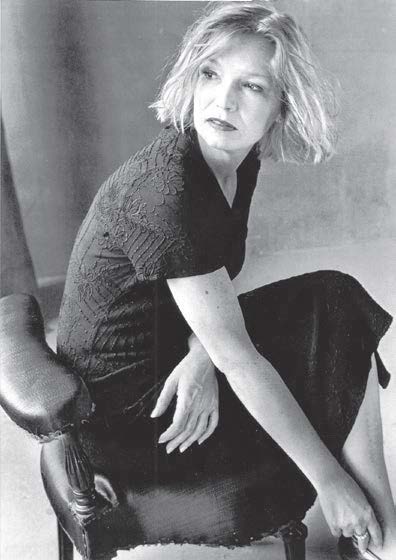
In 1989 Gibbons received a grant from the National Endowment for the Arts to write a third novel, A Cure for Dreams, published by Algonquin in 1991. Writing about three generations of women, she used transcripts from the Federal Writers’ Project of the Great Depression, housed at Wilson Library in Chapel Hill. Gibbons said she discovered for the first time “the voice of ordinary men and women as a pure form of art and force of nature.” The Los Angeles Times Book Review described the novel as “full of unforgettable scenes and observations, characters drawn surely and sharply, and writing that is both lyrical and lightning keen.” It won the PEN Revson Award for the best work of fiction published by an American writer under 35 years of age, the Oklahoma Homecoming Award, the Sir Walter Raleigh Award for Fiction, and the Nelson Algren Heartland Award from the Chicago Tribune.
When Charms for the Easy Life was published in 1993, it became an instant bestseller. The novel takes place between 1910 and 1945 in the home of three generations of highly intelligent and forthright eastern North Carolina women. It was followed by Sights Unseen, published in 1995, and a winner of the Critics Choice Award from the San Francisco Chronicle.
The following year, her sixth novel, On the Occasion of My Last Afternoon, was a story set during the Civil War. The Orlando Sentinel found it to be “a muscular narrative that humanizes all sides of that bloody conflict — North and South, Black and white, male and female.” Gibbons was described as “one of the most lyrical writers working today” by Entertainment Weekly.
In 1996 she became the youngest writer to receive the Chevalier de L’Ordre des Arts et des Lettres, recognizing her contribution to French literature. She spoke at the Pompidou Center in Paris and at the University of Rennes. In 1998, she received the North Carolina Award for Literature and, in 1999, North Carolina State University awarded her the honorary degree of Doctor of Humane Letters. She also received the Carolina Alumni’s Distinguished Young Alumni Award and was invited to become a member of the Fellowship of Southern Writers. She served as a judge for the Robert F. Kennedy Book Awards and wrote the introduction to the Modern Library Edition of Kate Chopin’s The Awakening and Other Stories.
Divining Women, published in 2004, is set during the influenza epidemic of 1918. Gibbons also wrote The Other Side of Air that year, which was left unfinished after the death of her close friend, the writer Jeanne Braselton. The sequel to Ellen Foster — The Life All Around Me By Ellen Foster — was published in 2005.
Gibbons is currently working on a memoir about the intersection of mental illness and creativity in her work, and has spoken and written about the need to remove the stigma from illnesses, like bipolar disorder, which she was diagnosed with in 1981.
— Adapted from the N.C. Writers’ Network
Ron Rash
Finding Ron Rash’s home is easy enough: Bear left at the tethered goat and keep climbing. Both a resident and chronicler of the high country, Rash is praised for his portrayals of the struggles and grit of the common and uncommon folk — from whom he is descended — of the Appalachians. A teacher, first in high school and then in a community college, Rash achieved his first critical success as a poet. His debut collection, Eureka Mill, draws on the experience of his grandparents’ generation, migrating from the mountains to find work in the cotton mills and the cultural upheaval attending it.
Though Rash has become internationally known as a novelist, his work stayed home in the mountains. His bestselling 2008 novel Serena is the story of a newlywed Northern couple, George and Serena Pemberton, and the full-blooded ruthlessness of the title character as the couple cause multiple tragedies in their pursuit of riches. The book was a finalist for the Pen/Faulkner Award.
A recipient of a Guggenheim Fellowship in 2017, Rash’s most recent novel, The Caretaker, was selected by The New York Times as one of its best books of 2024. “I set this novel on my grandparents’ farm between Blowing Rock and Boone because the happiest time of my life was spent on that farm,” says Rash. “The cemetery (appearing in the novel) is up there. Everything is the way it is in the book. I’ve always wanted to write about that place and finally did.”
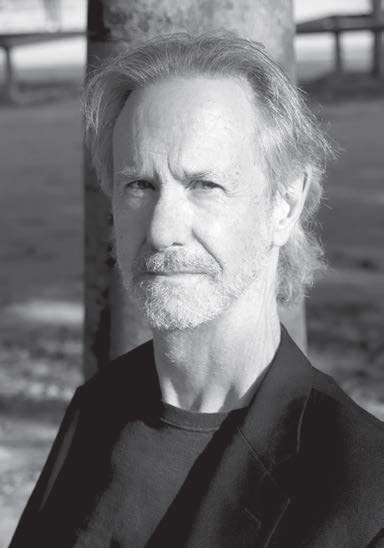
Rash’s writing life, in a sense, began with a pulled hamstring — a poet in disguise with a soft tissue problem. Tall and fit, he was a more than serviceable track star running the 800 meters in high school and college. “I’m a terribly obsessive person,” he says. “I’ve never been interested in being well-rounded. I was training one day in the winter and it gave. Sometimes those things can heal but this one wouldn’t. I’d been dabbling with writing but then it was, what now?”
What now became poems and short stories. “I tried to write a couple of novels when I was in my 20s and another one when I was about 30,” he says. “They were terrible. I burned them. Did a service to the world. They were really bad but that was OK, I was learning. I didn’t try to write another novel until I was in my mid-40s. That was One Foot in Eden. I read it and thought, this is something I can have my name on and not be ashamed of.”
By his own admission, Rash’s nature tends to be solitary, and it shows in his workday. “I’m repetitive, structured, ritualistic. I eat breakfast, exercise for an hour, get a big thing of unsweetened tea. Get my pencils laid out. Everything kind of has to be in the right place. I like to write in my office (at Western Carolina University) because it’s so monastic.”
The session may last an hour or six. “When I was working on Serena I’d go 10 hours a day at times,” he says. “The part I love is editing. I hate first drafts. What I love is getting to the last stages. That’s when I’m just listening to sounds. The writers I love, when you read them you’re gliding. You don’t have those stumbles where the sentence is awkward or the word just seems to be wrong.”
In The Caretaker, Rash writes:
As he neared Middlefork, Blackburn saw to the left where, among broken slabs of stone, small blue flowers bloomed. If you came upon periwinkle in woods or a meadow, Wilkie said a graveyard likely had been there. It had always struck Blackburn how something fragile as a flower could honor the dead longer than stone. Longer than memory too, a lot longer.
If Rash showed early symptoms of a man who would lead an author’s life, those signs didn’t come solely in the form of an 800-meter race. “As a child my father had severe mental problems. He had to be institutionalized at times. I would go to my grandparents’ farm,” he says of the land occupied by The Caretaker. “It was peaceful. I could go out in the woods. In a way, I found solace in nature — no TV, no vehicle — and just wander. The land borders the Blue Ridge Parkway. I was like Huck Finn. I was just kind of daydreaming.”
Selection as a member of the North Carolina Literary Hall of Fame is particularly poignant for a writer whose work lives so organically within the state. “So many of the writers who have inspired me are in there,” he says. “Fred Chappell, Lee Smith, Robert Morgan, they’re the generation that showed me the possibilities, and how to do it right. Each of them taught me something different. I think Fred gave me a sense of the possibilities of humor. Robert Morgan really showed me the possibilities of the details, the significant details of a place, knowing the landscape. Lee opened up the possibilities of writing stories. A wonderful sense of storytelling.”
His list of mentors, real and spiritual, unwinds as he talks: Thomas Wolfe; Robert Penn Warren; a bushel of European writers introduced to his universe by Chappell.
To the extent to which such honorifics are capable, there is one thing the Hall of Fame can do. “I am drawn to things that can be forgotten,” says Rash. These five inductees will not be among them.
